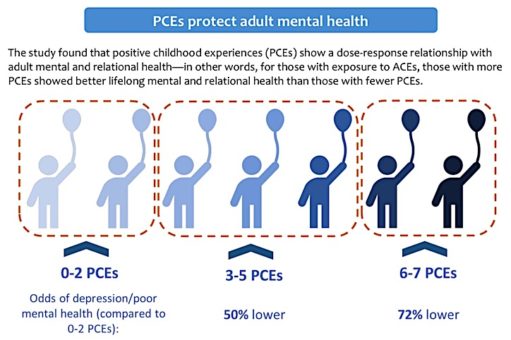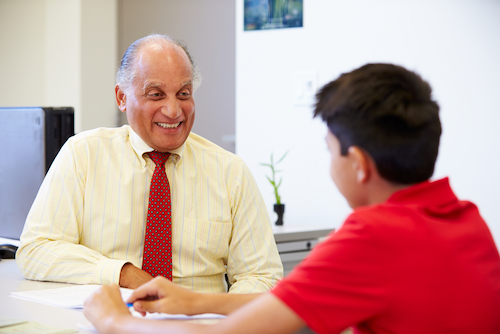Actions We Can Take to Reduce Student Trauma
Trauma is widespread among students in our schools today. School psychologist Katelyn Oellerich explores several actions educators can take to help alleviate its ill effects.
Many students are coming to school today with heavy hearts and minds, and educators are investing a lot of thought and consideration into how we can support our youth who have had or continue to experience trauma.
Although we may not always be aware of trauma, students may signal its effects in several ways in our classrooms, including:
- Behavior – students may show more defiance, withdrawal, perfectionism, reactive tendencies
- Learning – students may struggle to regulate emotions, show control of executive functioning, or organize material
- School performance – students experiencing trauma are more likely to be expelled, fail classes, or be considered for special education placement. (American Academy of Pediatrics)
If you wonder whether someone has experienced trauma, you do not necessarily go and ask them – even if you believe they are displaying some of these signs. Although we may feel eager and ready to help a student, it’s important that we follow their lead and not push them to divulge or share something they may not be ready to share or want to share.
As a school psychologist, I’ve often tried to make this point by sharing with co-workers that they likely have some past experience they don’t want others to be aware of and would like to keep private. Our students have this same right to privacy.
Although we may want to know about their sources of trauma – and knowing might help us to better understand them – we need to accept that we may never know. Fortunately, we also shouldn’t need to know in order to best support them.
What is trauma?
Much of the research on trauma has focused on “ACEs” which stands for Adverse Childhood Experiences. These experiences can include abuse, neglect, divorce, mental illness, guardian incarceration, and domestic violence in childhood. Research has found connections between the number of ACEs a child experiences and later onset of chronic disease, mental illness, and violence (2021). It’s also been noted that individuals who are more likely to experience the impact of racism, poverty or homophobia are more at risk of experiencing trauma (2018).
What can we do?
There are a number of actions educators can take to help alleviate the ill effects of trauma. Let’s take a look at two: Relationship building by teachers and staff; and more systemically, data-gathering, reflection and planning that leads to system-wide responsiveness.
Relationship Building
The creation and promotion of Positive Childhood Experiences (PCEs) has been proposed as a way to protect children from some of the impact of trauma. (See this infographic-style summary of an important 2015 Wisconsin study.)
Educators can support students in this way by helping to promote a sense of belonging for students at school and taking interest in making adult connections with children. Data has shown that creating these positive experiences for children can actually reverse the impacts of trauma.

While working with students to build a relationship, I’ve learned the importance of being authentic and reliable. Adolescents who have experienced trauma require someone they can depend on consistently and who will respond in a calm way even when the adolescent may be in a heightened state themselves.
It’s important, also, that the relationship show unconditional positive regard, and show grace and care for the student regardless of their choices. There may be moments where adolescents almost seem to test your relationship – at these points it is even more important that you continue to show up in support of the student as a person.
Here are a few additional thoughts that can help us support all students, especially those that have experienced trauma:
- Continue to provide structure and routine
- Even when a student arrives late, smile and greet them and help them to get started. Structure is helpful if there is less stability elsewhere in their lives.
- Consider the aesthetics of the room
- If lights are dim or especially bright in the room, offer alternatives whenever possible. “Would you like the lights to be dimmer or brighter?”
- Notice if the student prefers a certain space within the room.
- Take care about touching
- Be cautious to not ever touch a student without permission.
- Also note that some students may feel they need to say it’s okay because a staff member is considered a person of power to them. Notice their body language and if you sense they are not okay, do not attempt any sort of touch again.
- Responses to situations
- Notice a student’s reactions to situations and people. If you’re made aware that a student seems jumpy if you speak to them from behind, or in the presence of certain people, you might have someone with a close relationship mention this to them and ask what would make them most comfortable.
- Common questions and language
- Work to avoid questions that may presume positivity about something, like “Are you looking forward to the weekend/break/etc.?” If you instead ask, “How do you feel about the upcoming weekend/break/etc.?” you’re more likely to get a real answer and not make them feel bad if they aren’t looking forward to whatever is coming up.
System Level Change
- Relationship Mapping – Work to see which students have connections with staff at school and where connections may be missing and work to build these connections. (See this Harvard mapping resource for middle and high school.)
- Short Think Activity – Have staff do a short-think activity where they consider 3-5 students with whom they have a good relationship.
- After they write the names down privately, ask that they then write down three things they know these students enjoy, then three things they don’t enjoy, and finally what motivates these students.
- This activity is interesting because it can cause pause and reflection in those of us who may think we have really close relationships with students, and may help us to think deeper about truly listening and building rapport.
- Stop, Start, Continue, Change
- Review current structures, practices, and rewards.
- Use this worksheet to reflect on current practices and need for change.
- If this is done it’s important that teams review structures together and discuss what has worked and what should change. It’s most beneficial if there is a wide range of staff represented on the team.
- Some ideas I’ve seen offered through brainstorming sessions include: changing to whole school breakfast in the morning and no recess, removing rewards tied to standardized tests, and re-evaluating the aesthetics of the building.
- Social-Emotional Learning
- Ideally social-emotional learning is taught within the classroom setting to all students on a regular basis and reinforced throughout each day. CASEL offers a list of SEL resources for weekly lesson plans. These lessons can then be further incorporated through advisories or age-appropriate morning meetings.
- Structured breaks can also support in teaching relaxation and coping skills. The YouTube series Yoga with Adriene is one such way this can be done with middle school students. Another is through the use of a sensory path. This Edutopia article describes ways schools are doing this across the US.
Trauma is both common and unique
If you are aware that a student has experienced trauma, their responses are going to be unique to them. It is important to be cautious and aware of the signs of trauma but to not make assumptions about the wishes of students and instead follow their lead.
The need for educators to support students continues to go beyond academics. Students are coming to the classroom with basic needs that must be met before they can reach their full learning potential.
And finally: Teachers are carrying a heavy load. It’s also important that as they support our students and that they have the time and opportunity for self-support. Let’s make sure all our educators are able to turn to each other to reflect and offer support, and also to rest and renew when renewal is needed. This work is not easy.
Katelyn Oellerich, Ed.S. is a school psychologist in Mineral Point, WI in her 8th year and has had experience in both urban and rural settings. Also see her MiddleWeb article Bringing More Empathy into Your Classroom.
Katelyn has presented research focused on Mindfulness and Planning and Organization Skills and has additional training in social-emotional learning, art therapy, trauma sensitive schools, Families and Schools Together, and gender inclusive practices. Katelyn enjoys supporting student engagement by empowering relationships at school.

































